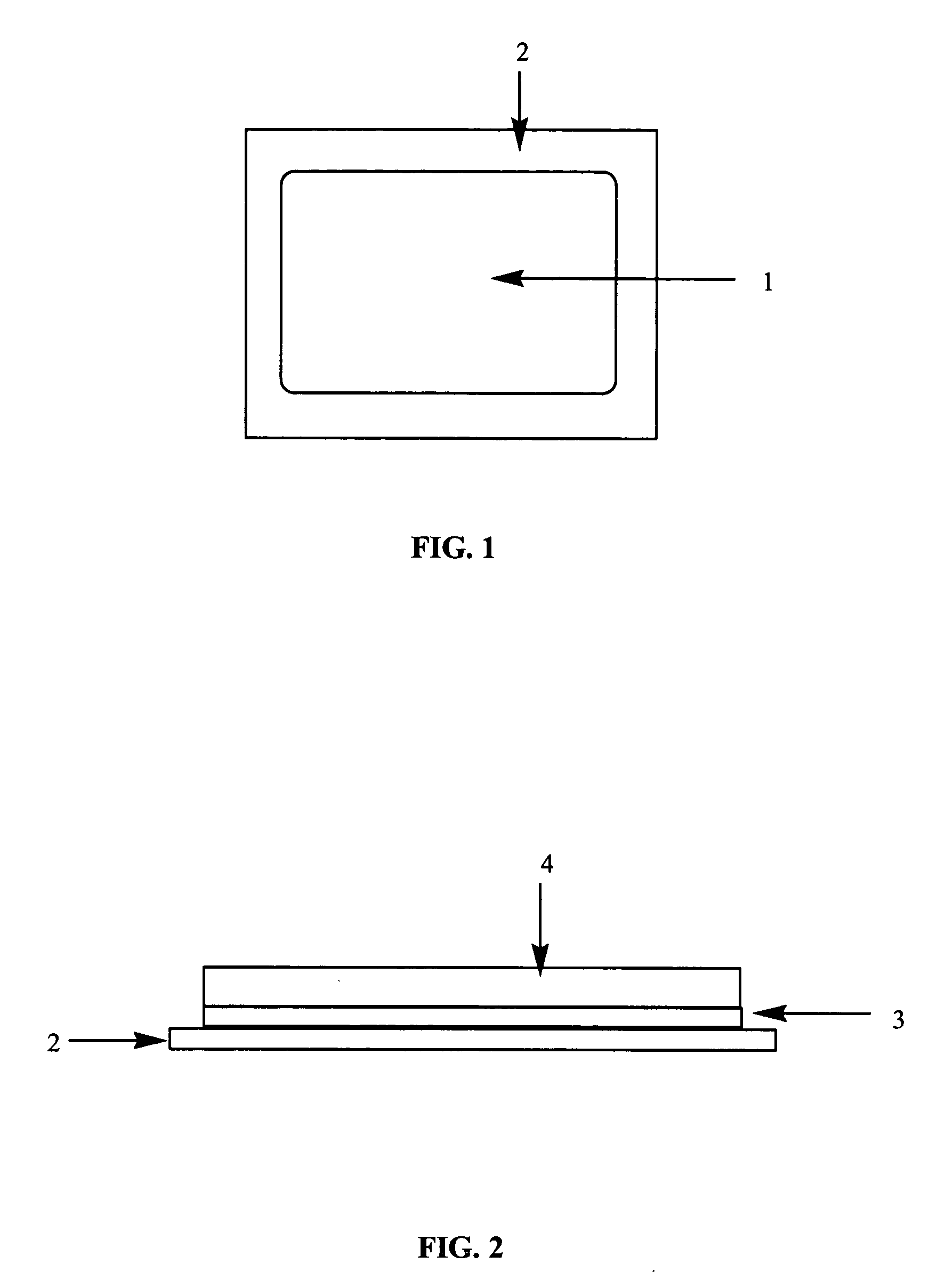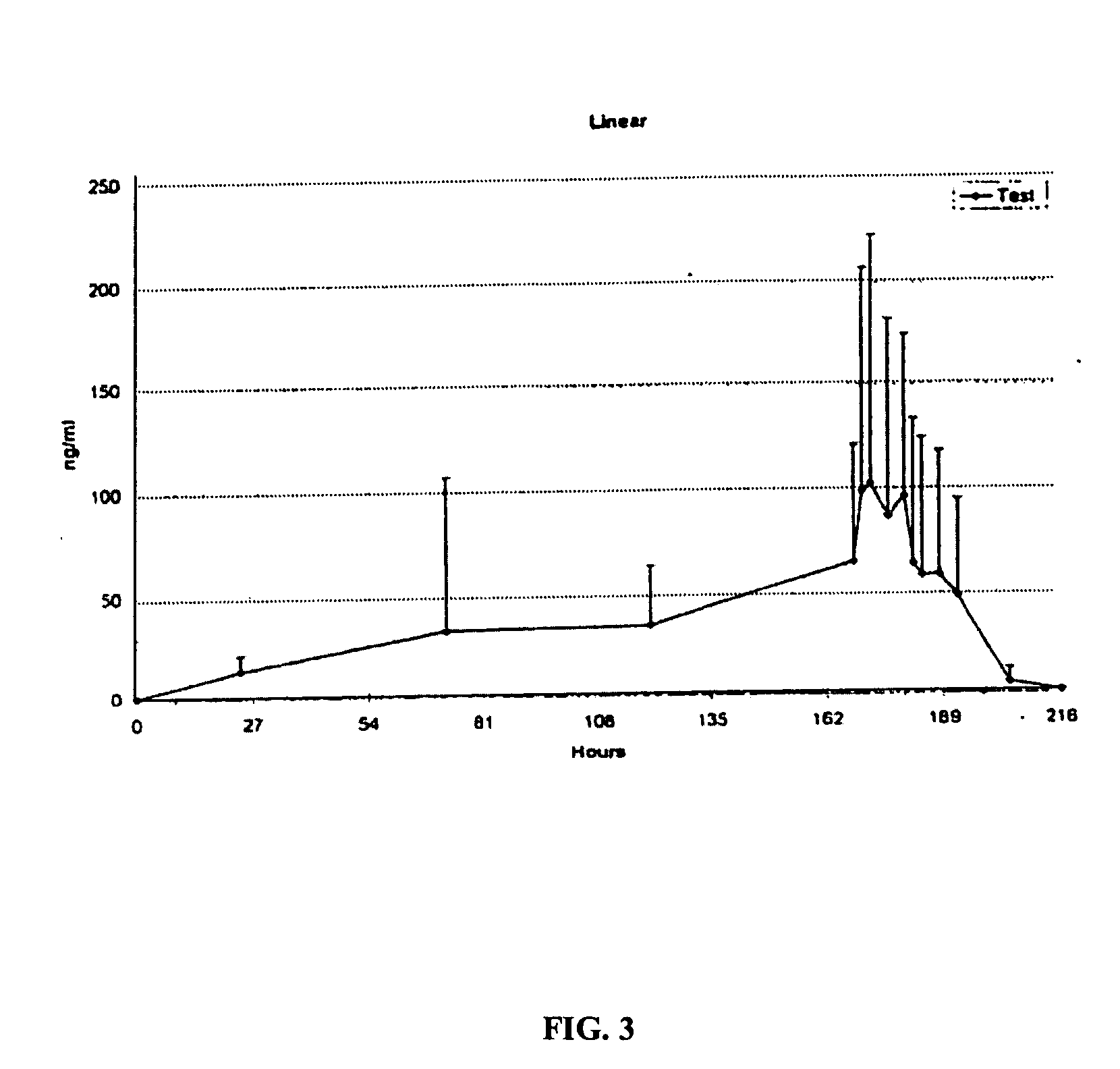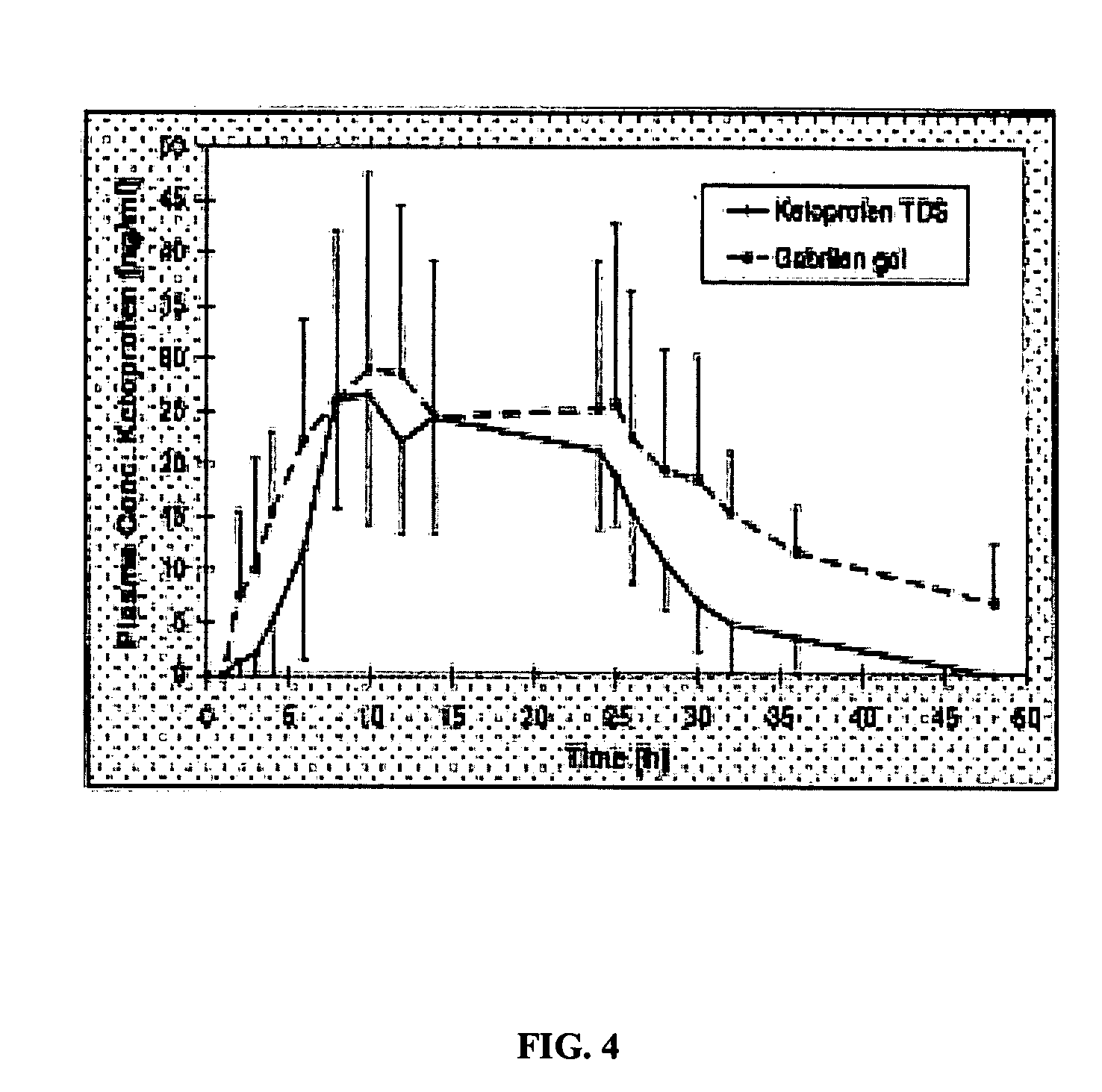Method of making ketoprofen patch delivery system
a delivery system and ketoprofen technology, applied in the field of transdermal patches, can solve the problems of surprise and unpredictability, and achieve the effects of minimizing ketoprofen, maximizing ketoprofen, and increasing the rate of ketoprofen releas
- Summary
- Abstract
- Description
- Claims
- Application Information
AI Technical Summary
Benefits of technology
Problems solved by technology
Method used
Image
Examples
example 1
Preparation of Ketoprofen Patch
[0069] To 30.83 g of a 36% (w / w) solution of an acrylate adhesive (Durotak 87-2852, National Starch & Chemical B.V., NL-Zutphen) was added a solution of 2.78 g of 2-(3-benzophenyl)propionic acid in 5.6 g of 2-propanol. The solution was homogenised by stirring for one hour and was then spread out, using a doctor blade, onto a siliconised, 100 um-thick polyester film (FL 2000 100u 1-S, Rexam Release B.V., NL-Apeldoorn) in a wet-layer thickness of 260 um. After drying (1 h at 40° C. and 50 min at 80° C.), the clear and homogenous laminate was lined with a woven bidirectional polyester (M02 / 97, white, K. O. Braun, D-Wolfstein) without stretching. The completed patch is 90 cm2 in size, has a matrix weight of about 55.6 g / m2, contains 100 mg. of 2-(3-benzophenyl)propionic acid, exhibits an adhesive strength [N / 25 mm] of 6.8±0.6, and exhibits a separating force [N / 25 mm] of 0.137±0.012.
example 2
Analysis of Ketoprofen Concentrations in Inflamed Tissues
[0070] An open, repeated dose study was undertaken, examining a number of subjects for a period of 6 days. One transdermal patch, prepared substantially according to Example 1 and containing a 100 mg dose of ketoprofen, was applied on the knee region or on the tunnel carpale region once a day, in the morning, for six consecutive days. Each of the first five patches were retained on the subjects for 24 hours, while the last patch was retained on the subject for 6 hours, and was removed just prior to arthroscopy or endoscopy.
[0071] Subjects were operated on under spinal anaesthesia (meniscus' arthroscopy) or local anesthesia (endoscopic carpal tunnel release) after the six consecutive days of application of the ketoprofen patch of the present invention. Prior to operation, the skin was disinfected appropriately according to standard preoperative routines. During the knee arthroscopy, biopsies were taken from the synovial tissu...
example 3
Comparative Example—Rolf (1997) and Rolf (1999)
[0078] The following comparative example reproduces data reported in Rolf (1997) and Rolf (1999). Concentrations reported are in ng / g for tissue, and ng / ml for fluid. The data was obtained after 5 days of daily administrations of a 30 mg, 70 cm2 ketoprofen plaster patch. The data reported was obtained immediately after removing the fifth patch.
TABLE 3Ketoprofen Concentration Data from Rolf (1997) and Rolf (1999)TISSUERolf (1997)Rolf (1999)Synovial Tissue—56.7Meniscus—349.3Cartilage—568.9Plasma17.8718.7Synovial Fluid—12.8Skin332,337.7—Fat2453.9—Tendon Sheath5026.3—Tendon952.8—
[0079] Table 4 contains a comparison of tissue to plasma concentration ratios as reported in Example 2, Rolf (1997) and Rolf (1999). As can be seen, the patch of the present invention achieves a synovial tissue / plasma ratio that is about twice as large as the synovial tissue / plasma ratio reported in Rolf (1999), and a tendon sheath / plasma ratio that is about half...
PUM
| Property | Measurement | Unit |
|---|---|---|
| thickness | aaaaa | aaaaa |
| concentration | aaaaa | aaaaa |
| concentration | aaaaa | aaaaa |
Abstract
Description
Claims
Application Information
 Login to View More
Login to View More - R&D
- Intellectual Property
- Life Sciences
- Materials
- Tech Scout
- Unparalleled Data Quality
- Higher Quality Content
- 60% Fewer Hallucinations
Browse by: Latest US Patents, China's latest patents, Technical Efficacy Thesaurus, Application Domain, Technology Topic, Popular Technical Reports.
© 2025 PatSnap. All rights reserved.Legal|Privacy policy|Modern Slavery Act Transparency Statement|Sitemap|About US| Contact US: help@patsnap.com



